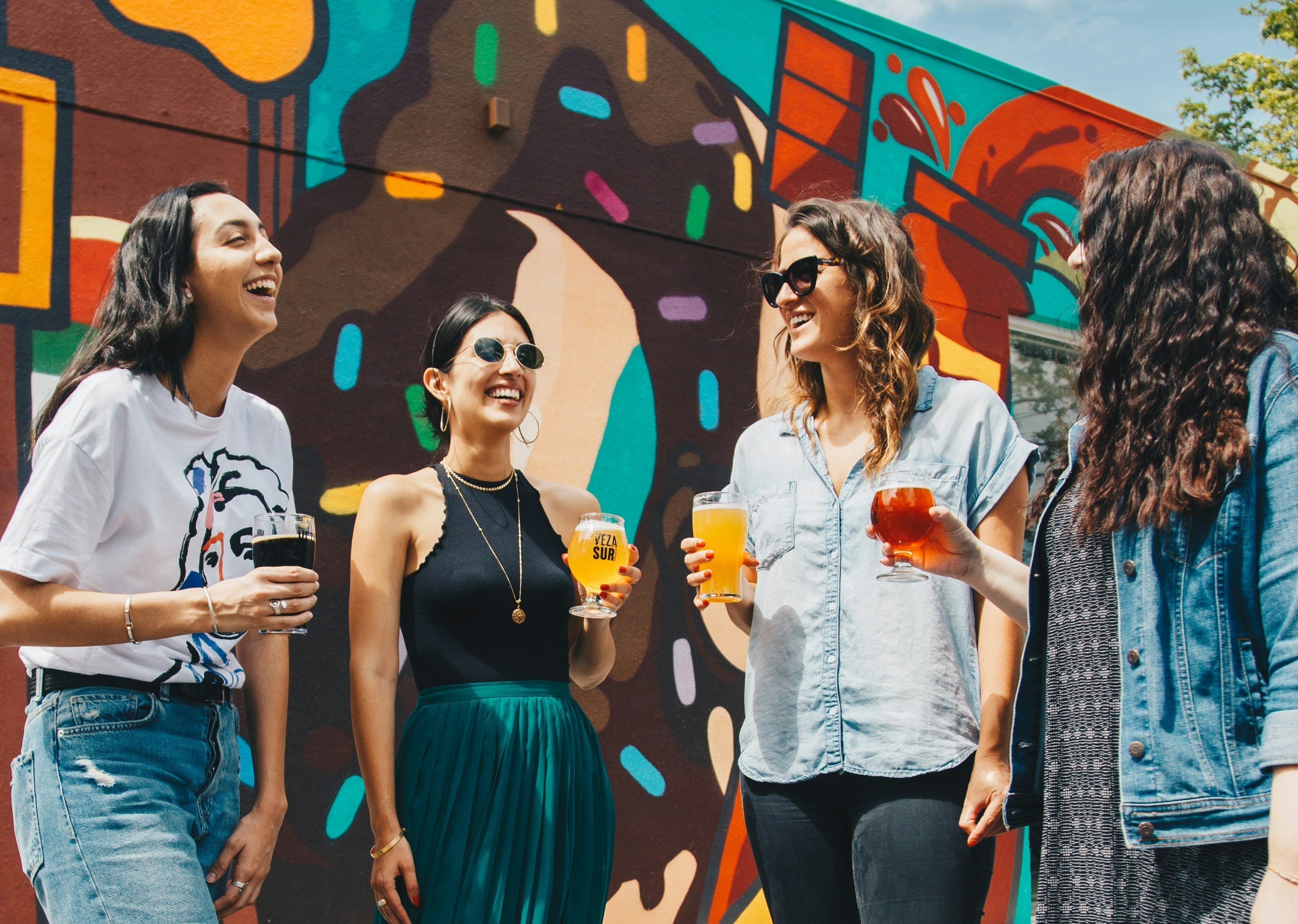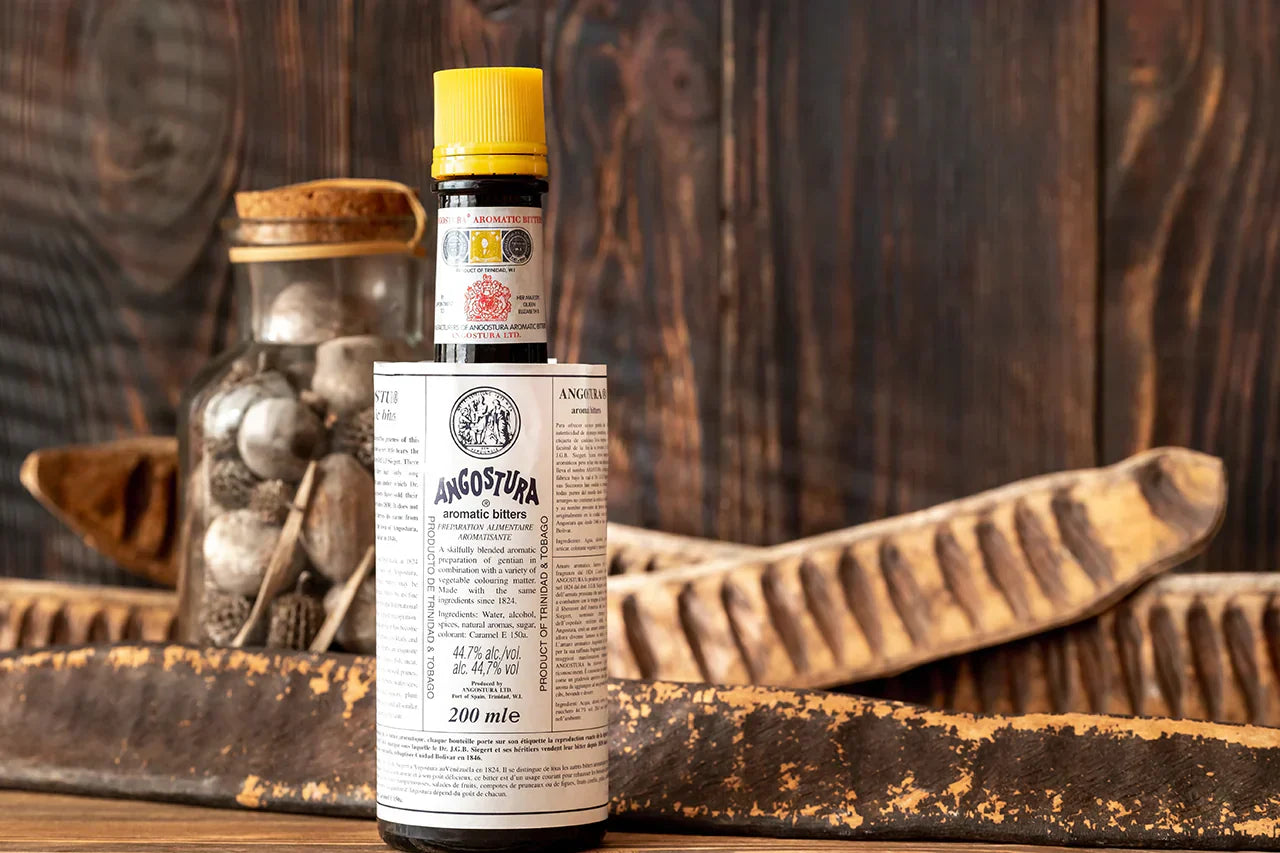
Low & No: Why Younger Generations Opt For Sober Curiosity More Than Anyone Else
Gone are the days where to be accepted by your mates you had to be a booze hound, drinking into the early hours and c...
Read MoreApr 10, 2025

Angostura bitters can be a cocktail (and mocktail) essential.
This aromatic elixir has been quietly transforming drinks since the early 19th century. With its unique blend of herbs, spices, and exotic botanicals, Angostura bitters adds depth and complexity to everything from classic Manhattans to contemporary craft cocktails.
But what exactly are these bitters, and how can you harness their full potential behind the bar? And can you use them if you’re not drinking alcohol?
We answer all your questions on this versatile cocktail ingredient in this article…

Today, Angostura Bitters can be found behind almost any cocktail bar across the globe, but would you believe that their first use was as a medical remedy?
It’s true! The story of Angostura bitters begins in the early 19th century, a period marked by medical advancement. Dr. Johann Gottlieb Benjamin Siegert, a German physician, was working as the Surgeon General in Simon Bolívar’s army in Venezuela where he was stationed in the town of Angostura.
In 1824, he created a tonic to alleviate the stomach ailments and tropical diseases affecting soldiers. After years of meticulous research and experimentation, he developed a unique blend of herbs, spices, and botanicals that would become known as Angostura bitters.
Initially, Dr. Siegert's creation was used primarily for medicinal purposes, helping digestive issues and fevers. The bitters became a popular remedy and by 1830, Dr. Siegert began exporting his bitters to England and Trinidad, where they garnered further acclaim. His sons, Carlos and Alfredo Siegert, continued to expand the business after his death, establishing a production facility in Trinidad in 1875. This move was instrumental in solidifying Angostura bitters' global presence, and the brand remains headquartered in Trinidad and Tobago to this day.
As the popularity of cocktails grew in the late 19th and early 20th centuries, Angostura bitters found a new role as a key ingredient in many classic drinks. Bartenders discovered that just a few dashes of these aromatic bitters could elevate the flavor profile of their creations, leading to the inclusion of Angostura in iconic cocktails such as the Old Fashioned, Manhattan, and Pink Gin. Over the years, Angostura bitters have become synonymous with quality and tradition, maintaining their status as a must-have item in bars and homes around the world.

Bitters are a diverse category of aromatic flavouring agents used to enhance the taste and complexity of various beverages and dishes. Angostura Bitters are a particular brand, but on whole bitters are typically made by infusing a high-proof alcohol base with a blend of herbs, spices, fruits, roots, and other botanicals.
The resulting liquid is intensely concentrated, requiring only a few drops or dashes to impart its distinctive flavor. Bitters can range from sweet and floral to intensely bitter and medicinal, each offering its unique profile to the culinary and mixology worlds.
At their core, bitters function by stimulating the taste buds and enhancing the overall sensory experience of a drink or dish. They add layers of flavour that can balance sweetness, accentuate acidity, and provide a pleasant bitterness that rounds out the palate. This complexity is why bitters are often described as the "salt and pepper" of the cocktail world, essential for achieving a harmonious flavour profile. In addition to their role in cocktails, bitters are also used in various culinary applications, from marinades and sauces to desserts and baked goods.
There are several types of bitters, each with its specific use and flavour profile. Aromatic bitters, such as Angostura, are the most common and versatile, characterised by their complex blend of spices and botanicals. Orange bitters, made from the peels of bitter oranges, offer a bright, citrusy flavour that complements a wide range of cocktails. Specialty bitters, such as lavender, chocolate, and cardamom, provide unique and nuanced flavors that can elevate specific recipes. Whether used in classic cocktails or modern culinary creations, bitters are an essential tool for any bartender or chef looking to add depth and complexity to their craft.

Angostura Bitters are by far the most famous and popular of all the bitters, and their distinctive flavour is instantly recognisable.
This distinctive “kick” is a combination of 40 herbs, spices, and botanicals. While the exact recipe remains a closely guarded secret, certain key ingredients are known to contribute to its distinctive taste. Gentian root, a bitter herb native to Europe, is one of the primary components, providing a potent bitterness that forms the foundation of Angostura's flavor. This bitterness is then balanced by the addition of warm spices such as cinnamon, cloves, and cardamom, which introduce layers of aromatic complexity.
Whether you’re a cocktail or a mocktail person, angostura bitters can add that “je ne sais quoi” to your drink.
If you’re looking for zero-proof, completely alcohol free options, then don’t opt for angostura bitters as they do contain small amounts of alcohol that can raise the ABV of your drink to 0.5% (still considered non-alcoholic but not alcohol-free).
But if you’re okay with having 0.01 - 0.5% alcohol in your drink, adding a couple of drops of angostura bitters can make non-alcoholic cocktails feel extra special.
Angostura bitters enhance some of the most iconic drinks in mixology - the Old Fashioned, the Manhattan and Pink Gin cocktails too.
Yes. Although angostura bitters do contain alcohol, because bitters are used in such small amounts—just a few dashes per drink—the actual alcohol contribution to a cocktail is minimal. This means that while Angostura bitters are technically alcoholic, they don’t significantly increase the alcohol content of your beverage, making them a great addition in both alcoholic and non-alcoholic drinks alike.
No, due to the alcohol content, angostura bitters must be left out of alcohol-free drinks.
When you think of alcohol, your mind probably jumps to cocktails, wine, or beer—but Angostura bitters actually have an alcohol content of around 44.7% ABV, which is higher than many spirits like vodka or whiskey. In alcohol-free drinks which need an ABV of 0.0, angostura bitters can’t be included.
However, there are some amazing bitters on the market that are completely alcohol-free.
CleanCo drinks are proudly 0.0 ABV, meaning we’re alcohol-free. So it only makes sense that we like to use 0.0 bitters in our drinks.
When we want to use an angostura bitter equivalent without the alcohol content, we opt for All The Bitter, which is organic and good for gut health, or seasn - another great bitters brand. Both are great alcohol-free bitters options that are full on flavour with none of the alcohol content.
Want to explore your alcohol-free, zero-proof options? Shop our full range of non-alcoholic spirits now.
Have we captured your curiosity? Read on
Please enter your details below to sign in
Please enter your details below to register an account.
Forgot your password? No problem just enter your email to reset you password.